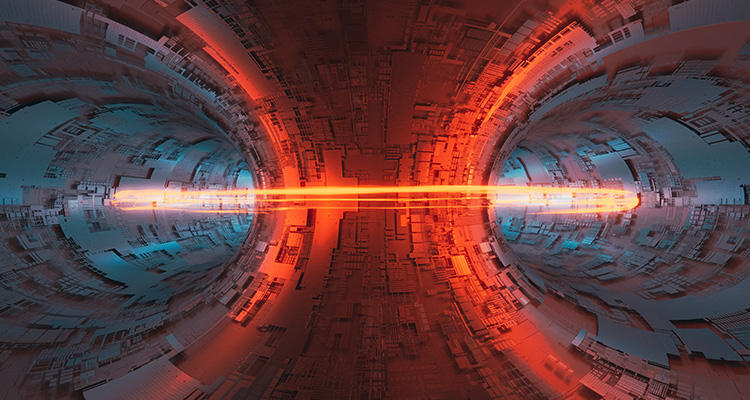Eve Pope looks at the solutions available to major AI players as they seek to power data centers
As the AI boom continues to skyrocket, new grid capacity will be needed to meet the rising power demand of data centers. Global energy consumption from data centers will exceed 1000 TWh by 2035 according to IDTechEx’s Sustainability for Data Centers Report. Against a backdrop of grid connection delays and the ambitious sustainability commitments of leading hyperscalers, the dominant AI players are investing in bringing new renewable power generation online.
Amazon, Microsoft, Meta, and Google, are the leading corporate buyers of wind and solar power globally. These established renewable power sources have reached a level of maturity where new installations are typically cheaper than fossil fuel power on a levelized cost of electricity basis, even when unsubsidized (i.e. without tax credit support). Therefore, mature renewable technologies will continue to play a major role in the decarbonization strategy of green data centers.
However, the intermittency of wind and solar is incompatible with the continuous power demands of data centers. This means fossil fuel power is still typically used to provide electricity to data centers for many hours of the day. Moreover, following the gutting of tax credit support for wind and solar in the US (a leading data center market) under the ‘Big Beautiful Bill’, much of the upcoming project capacity could be lost. These factors mean investment in emerging carbon-free power solutions such as small modular reactors, enhanced geothermal, and battery energy storage from leading AI players will become increasingly important.
Nuclear power
In recent years, data centers have reinvigorated interest in nuclear power solutions. Approaches have ranged from restarting large-scale nuclear fission plants (with Three Mile Island coming back online as soon as 2027 to help power Microsoft data centers) to assisting the commercialization of small modular reactors (SMRs).
By taking advantage of assembly line production, SMRs promise cost reductions and shorter construction times relative to their conventional large-scale counterparts. While wider adoption of SMRs will require both technical and regulatory developments, data center hyperscalers see potential. In October 2024, Google signed “the world’s first corporate agreement to purchase nuclear energy from multiple SMRs”, intended to bring Kairos Power’s first SMR online by 2030.
Even nuclear fusion could play a role in powering data centers by the 2030s. In June 2025, Google signed a deal to purchase 200MW of power from Commonwealth Fusion Systems. Commonwealth Fusion Systems, an MIT spinout, has raised over $2 billion in funding to date, and is currently building a fusion prototype facility based on the tokamak design. According to IDTechEx’s Fusion Energy Market research, the fusion industry has grown over the last five years from experimental reactors to a burgeoning alternative energy industry, with around 50 startups and over $10 billion in private investment to date.
Enhanced geothermal
Worldwide, the number of sites suitable for conventional geothermal power plants is limited. However, enhanced geothermal technologies seek to increase the number of viable locations. Both Google and Meta are supporting upcoming enhanced geothermal installations which aim to demonstrate commercial viability, deploying technologies from startups such as Sage Geosystems and Fervo Energy.
Grid-scale Li-ion batteries
Battery energy storage would increase the number of hours per day that data centers can be powered by solar/wind energy. Over the past decade, Li-ion batteries have become an increasingly important stationary energy storage technology, suitable for grid-scale applications. When scaling up these technologies, players are prioritizing different performance characteristics such as storage duration or energy density.
In July 2025, it was announced that Redwood Materials is collaborating with General Motors to explore using GM’s US-manufactured and second-life electric vehicle batteries for stationary and grid-scale energy storage repurposing. This was reportedly motivated by accelerating US electricity demand driven by AI and the electrification of transportation and industry.
Gas power with carbon capture
New fossil fuel power capacity will also inevitably be brought online to support the growth of AI. Where green solutions are desired, these facilities can be paired with carbon capture technologies to reduce emissions by over 90 percent. In December 2024, Exxon Mobil announced plans to construct a new 1.5GW natural gas-fired power plant coupled with carbon capture dedicated to powering data centers. Carbon capture solutions, especially those based on amine solvents, are mature technologically but high costs mean business models have typically struggled historically. IDTechEx’s Carbon Capture, Utilization, and Storage Markets report found that economies of scale and developing carbon markets are the key for scaling up CO2 capture.
Outlook
With the Trump administration’s AI action plan unveiled in July 2025, the ‘AI arms race’ is set to continue. This could place unprecedent pressure on power infrastructure. Meeting this increased energy demand without soaring carbon footprints will require significant investment into sustainable technologies from data center hyperscalers. Learning lessons from wind and solar power, investing in early-stage renewable energy technologies will lead to long-term reductions in costs alongside reductions in emissions.

Eve Pope
Eve Pope is a Senior Technology Analyst at IDTechEx. IDTechEx provides trusted independent research on emerging technologies and their markets. Since 1999, it has been helping clients to understand new technologies, supply chains, market requirements, opportunities, and forecasts.
